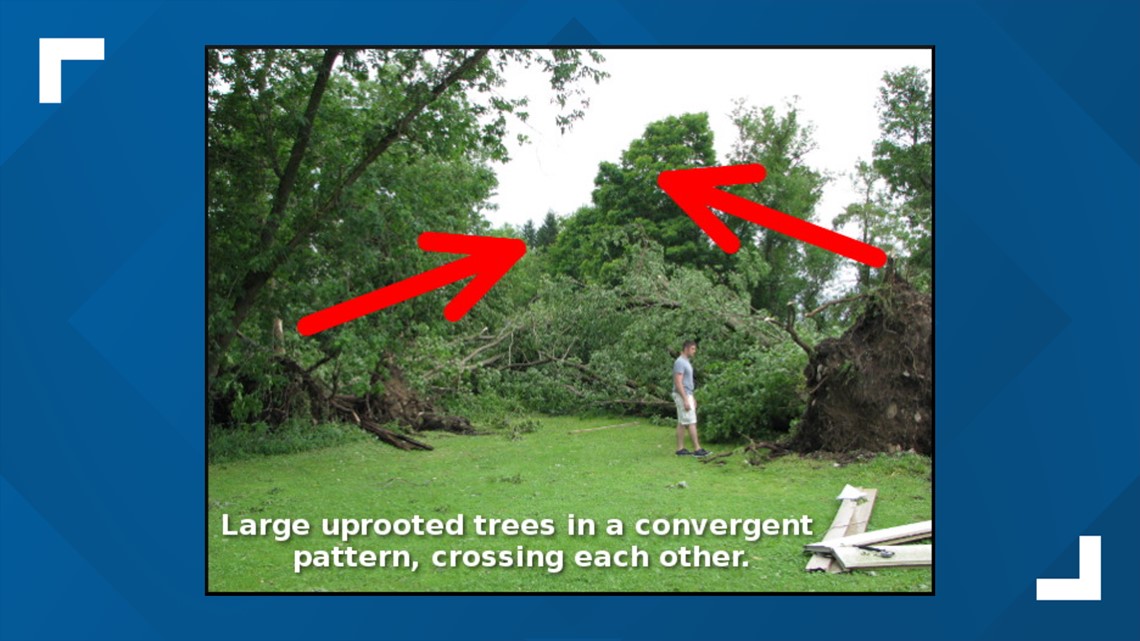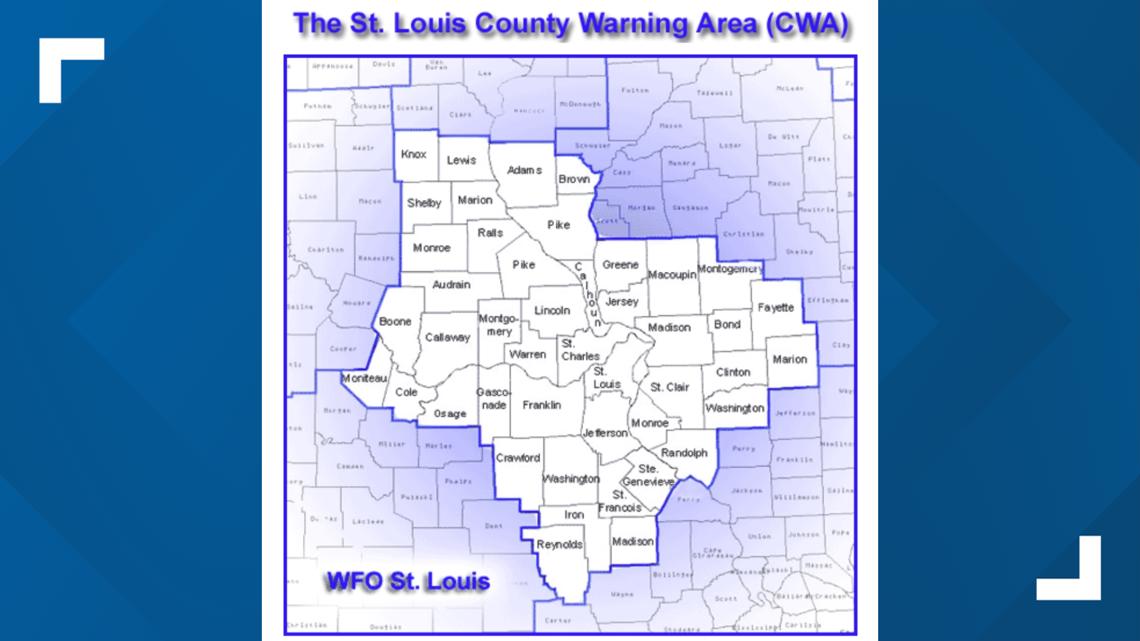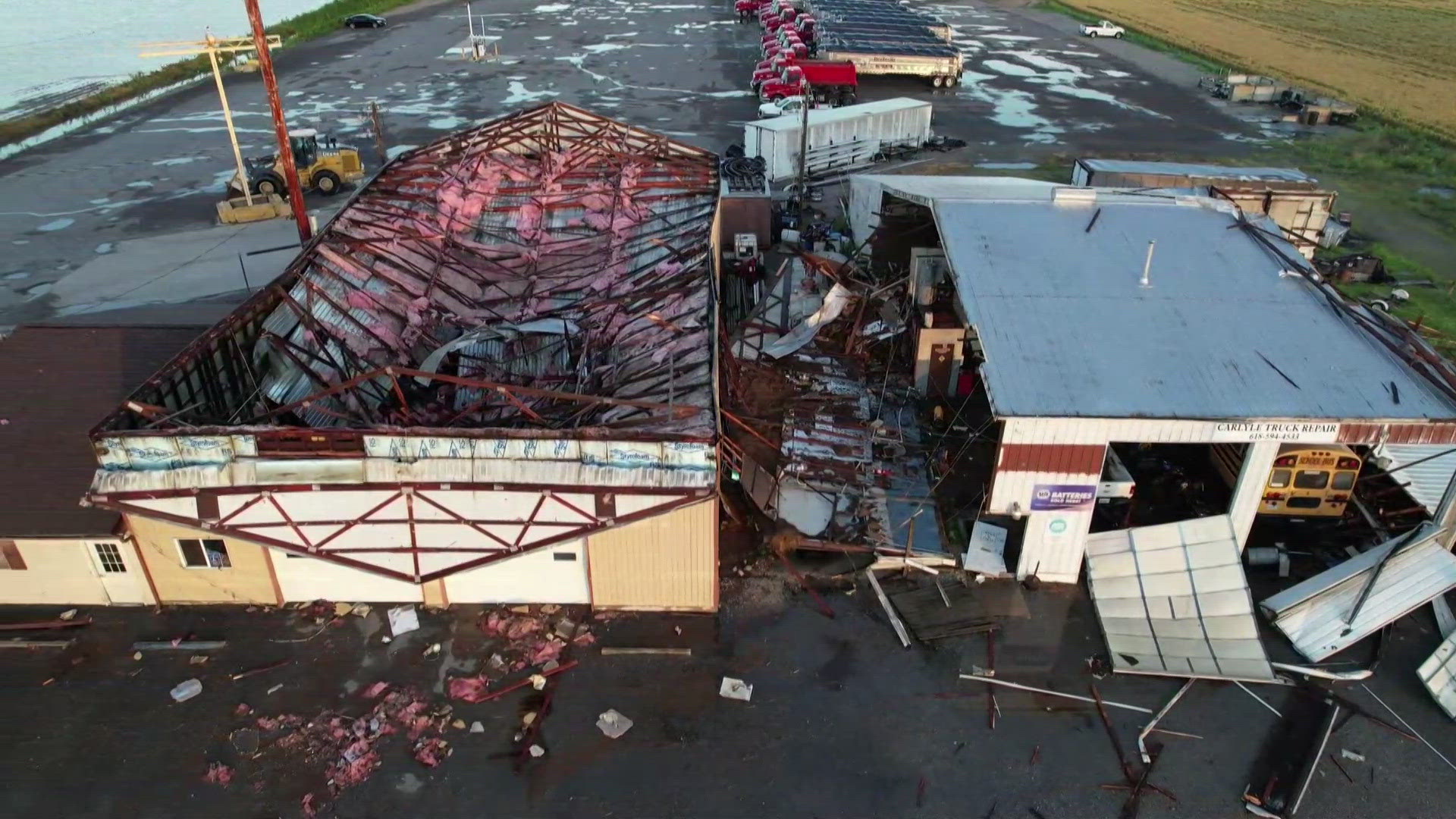ST. LOUIS — National Weather Service survey crews were deployed Monday morning to assess the damage caused by a severe storm system that rolled over the entire St. Louis region Sunday evening.
Numerous counties in the 5 On Your Side coverage area were hunkered down after multiple tornado warnings were issued by the NWS. The survey crews traveled to areas where damage was reported to confirm whether suspected tornadoes touched down, including:
- Oakville/south St. Louis County area.
- New Baden, Illinois, area.
- Carlyle, Illinois, area.
NWS also said crews may visit Marquand, Missouri, if they get more detailed reports of damage. Crews also urged people in Madison County, Missouri, to end in damage pictures and as many details as possible.
How many St. Louis region tornado touchdowns have been confirmed?
The NWS confirmed seven tornado touchdowns in the St. Louis region, including:
- A tornado south of Mehlville, Missouri, reached a max windspeed of 97 mph. The tornado's path stretched from Interstate 55 to just outside of Columbia, Illinois, over the Mississippi River.
- A tornado in Marquand, Missouri with max wind speeds of 100mph.
- A tornado in Stephen A. Forbes State Park southeast of Kinmundy, Illinois, with max wind speeds of 104 mph.
- A tornado south of Stephen A. Forbes State Park with max wind speeds of 90 mph. The tornado continued into Clay County, Illinois, where it increased in intense max wind speeds at 130 mph.
- A tornado near Carlyle Lake with estimated max wind speeds of 97 mph.
- A tornado that started in New Baden, Illinois, and went through southeast of Damiansville with a max wind speed of 90 mph.
- A tornado near Fenton, Missouri that touched down just west of Highway 141 near Fielder Lane with max wind speeds of 76mph.
The NWS Springfield, Missouri, office confirmed four tornado touchdowns in the southwestern region of the state, including:
- A tornado northeast of Seymour with max wind speeds of 100 mph.
- A tornado south of Graff with max wind speeds of 100 mph.
- A tornado in Bradleyville with max wind speeds of 80 mph.
- A tornado south of Buffalo with max wind speeds of 65 mph.
How do meteorologists confirm tornado touchdowns?
Radars and electronics can only tell NWS meteorologists so much. To figure out whether a tornado happened, the service has to head out into the field. Less than 24 hours after the storms, the agency sent out multiple survey teams to assess damage and figure out whether a legitimate tornado touchdown occurred.
"The pattern of damage determines if it was a tornado. NOT how much damage was caused," the NWS said on its website. "We conduct surveys to find out exactly what happened. This helps us to improve our warnings for the future. This is also important for historical reference."
Tornado damage can often be confused with damage from a microburst, so meteorologists look at the type of damage rather than how much damage occurred.
Damage from a tornado often looks chaotic and leaves large trees uprooted and often crossing each other on the ground, the service said. Smaller snapped branches or trees aren't usually helpful, since those don't convey the true severity of winds.
For example, the NWS originally said in a tweet on March 14 that a tornado was confirmed near Maeystown, Illinois. However, about half a dozen surveyors went to the area the next day and couldn't find any damage indicating a tornado was in the area.


Editor's note: "St. Louis region," as used in this article, refers to the St. Louis County Warning Area (CWA), the region that the National Weather Service's St. Louis office covers, rather than the "St. Louis metro area." Tornadoes rarely touch down in what is considered the St. Louis metro area. For example, of the 1212 confirmed tornadoes in the St. Louis region from 1805 to 2023, only 54 have touched down in St. Louis County.


Resources for storm victims
If you need assistance paying for storm damage repairs to your property, 5 On Your Side has compiled a list of resources.
Illinois residents can find help through Ready Illinois.
For residents on the other side of the Mississippi River, the Missouri State Emergency Management Agency has a list of financial and health resources for those affected by storm damage.
Top St. Louis headlines
Get the latest news and details throughout the St. Louis area from 5 On Your Side broadcasts here.

